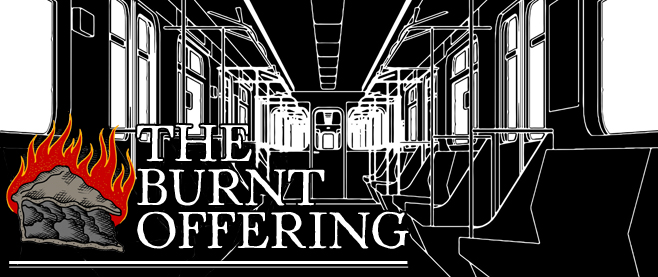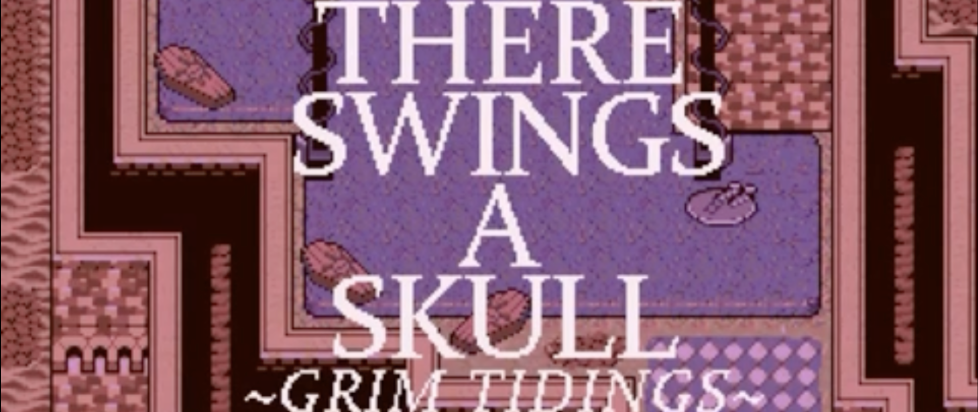
There Swings a Skull Completes the Bigger Picture with Grim Tidings
This column has superficial spoilers for There Swings a Skull: Grim Tidings. The game contains “immolation, smoking, hanging, drowning, spiders, apocalyptic themes, and harsh language.”
———
“From the point of view of style, a healthy work of art is one whose style recognizes the beauty of the material it employs.”
– Oscar Wilde
I first played There Swings a Skull in June, when developers Quinn K. and Conor Walsh included it as part of the Queer Games Bundle. At the time, it was an accomplished game jam narrative horror game about a smoldering dystopian village. Protagonist Anatoli has no choice but to keep going to his pointless job selling tickets for a train that never arrives. People in the village are picked off by the punishing sun every day, and then they’re mocked by the town’s fascist loudspeaker and television overlords. (That’s not even a spoiler – it’s what happens right away.)
On September 15, Quinn and Conor released There Swings a Skull: Grim Tidings. This expanded game updates Anatoli’s story and adds a longer second route for his husband Pyotr, previously a supportive but supporting character. Anatoli’s story is intact, with some updated art and new little bits and pieces. But for me, Pyotr has become the star of the game. His story drops you below ground into a sprawling, fantastical sewer – or is it? – where the story deepens and takes off in completely new directions.
The original jam version is set within one village, Pareildas, where your primary mechanic is walking to and from work, experiencing mounting dread and horror alongside train ticket seller Anatoli. He kisses his husband Pyotr goodbye every day and walks through a town dotted with more and more corpses. Quinn made the art for the jam game as well as almost all the new art for Grim Tidings. “A lot of that route’s major groundwork was laid in about 3 days,” Quinn says, showing me an early screenshot where Pareildas is already largely drawn in.
That artwork stuck, too. “Anatoli’s route needed very little touching up graphically compared to the jam game version that released after a mere 3 weeks of work,” Quinn says. “Pyotr’s route has oodles more unique assets than Anatoli’s. For Pyotr’s route, I was still completing graphics a month before release. It was stressful! One thing that it allowed me to do, however, is to expand my horizons as an artist. I pixelled a bunch of ‘firsts’ in it – animated, swaying grass, giant spider-statues, deep water. I also flexed some visual inspirations I’d always wanted to make use of, specifically in the endgame area.”
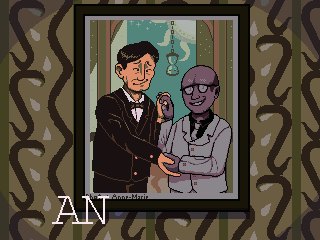
Conor is the game’s main writer, and he tells me multiple times that the author is dead – he doesn’t want to suggest how anyone should feel about the game’s dreamlike story. “I may have written this but the second it goes out into public hands their takes are as valid as mine (if not more so),” he says.
Like Quinn, Conor had to decide how to turn a completed game jam story into something larger. “The problem that we encountered when we decided to extend the game was mainly that the original was a very tight, self-contained experience, so if we wanted to expand on that we’d have to get creative… and we did!” Conor says. “She handled art and area design and we teamed up [for] worldbuilding, I did the bulk of the writing, some scripting, and some sound effects.”
Anatoli’s story is evocative, but in some ways narratively straightforward – he must walk back and forth through the scorched world, and that world gets worse every day. In that story, we encounter Pyotr almost incidentally. He sends Anatoli off to work each morning and greets him with dinner in the evening. He even embodies Anatoli’s growing dread later in the story in the form of a series of worrying, scary drawings in his sketchbook. Pyotr seems less and less stable, but doesn’t everyone in Pareildas?
If Anatoli’s story is about powerlessness, though, Pyotr’s is about agency. This is one reason it’s so narratively effective – a Rashomon-like change in perspective shows that Anatoli is the calm duck you see on the surface, while Pyotr is the furiously paddling feet below. “Both paths are designed to kind of contextualize the other; how each husband responds to problems and goes about dealing with them in his own way,” Conor says.
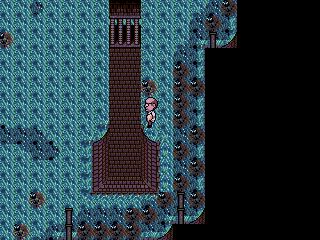
“Pyotr’s route has a lot more variety; he’s not the breadwinner, but an artist, and generally a more adventurous mind than Anatoli. So the tension in his case comes more from seeing his story unfold,” Quinn says. “I think something I like about the way Conor and I conceptualized TSAS:GT is the dream-like feel of Pyotr’s route. Oftentimes, my task became the stitching-together of unrelated-feeling environments in a way that maybe didn’t make sense, but felt right. That was a great exercise and something I enjoyed a lot.”
When you leave the apartment as Pyotr, the town looks the same, but the covered sewer is open. One of Pyotr’s lines of dialogue is about the safety of the ceiling inside their apartment, compared with the deadly heat and oblivion on the streets of Pareildas. In the sewers, he finds another ceiling of safety. There’s a Maslow’s hierarchy quality to Pyotr’s explorations: he’s lived in fear of the expanse of the outdoors for so long, and now he’s free to take on an entire new world that’s out of the sun.
“On my end, what I wanted to achieve first and foremost was a feeling of ‘deception’,” Quinn says. “I wanted the sewers to feel almost as though they were something else, the living, breathing bowels of Pareildas, masquerading for a sanitation system.”
The two men’s journeys shore each other up. “Pyotr protects Anatoli from what’s going on, Anatoli protects Pyotr from what’s going on. Sort of funny that the best solution would be the two of them coming clean with one another, but when you’re with someone for a long time it can get hard to do that, I think,” Conor says. “I guess you could say that having them both sort of let us have our cake and eat it too. I think we decided to show ‘more’ of Pareildas [and] the world we’d built in Pyotr’s route, but by keeping Anatoli’s largely how it was we still had that tight, atmospheric experience.”
Conor says that, because he wrote the dialogue directly in the RPGMaker engine, he doesn’t know for sure how much writing there is in the jam game versus Grim Tidings. But he estimates that the scope of total writing increased from about 4,000 words to about 10,000 – two and a half times larger.
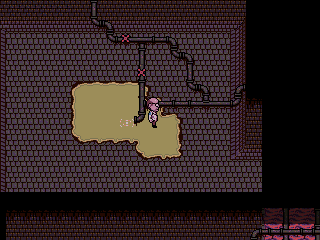
Quinn estimates that the new game required about eight times as much total artwork labor as Anatoli’s original route. “This was partially because I had to fix mistakes created by the time limit, update some of the existing graphics, create new areas even for things we’d already done, and just… drew so many portraits!” Quinn says. “I wasn’t surprised by its size, really! What I was surprised by is that it took slightly longer than expected. I wanted TSAS:GT to be done in a year or slightly under, but 2022 was a strangely difficult year for a lot of us on the team, so we played it how we could.”
I think Quinn and Conor have offered a thoughtful example of accurate scoping for a jam followed by fairly accurate scoping of a larger game. Quinn took the opportunity to push her artistic boundaries, while Conor wrote a new story that weaves from the original into a completely different direction. There’s even one big, honestly huge thing that changed fairly last minute. Conor is shy about authorial intent and I respect that, so I won’t even say what the change is. If you’ve played the game and want to talk about it, let me know.
———
Caroline Delbert is a writer, avid reader, and enthusiast of just about everything. Her favorite topics include islands, narratives, cosmology, everyday math, and the philosophy of it all.


